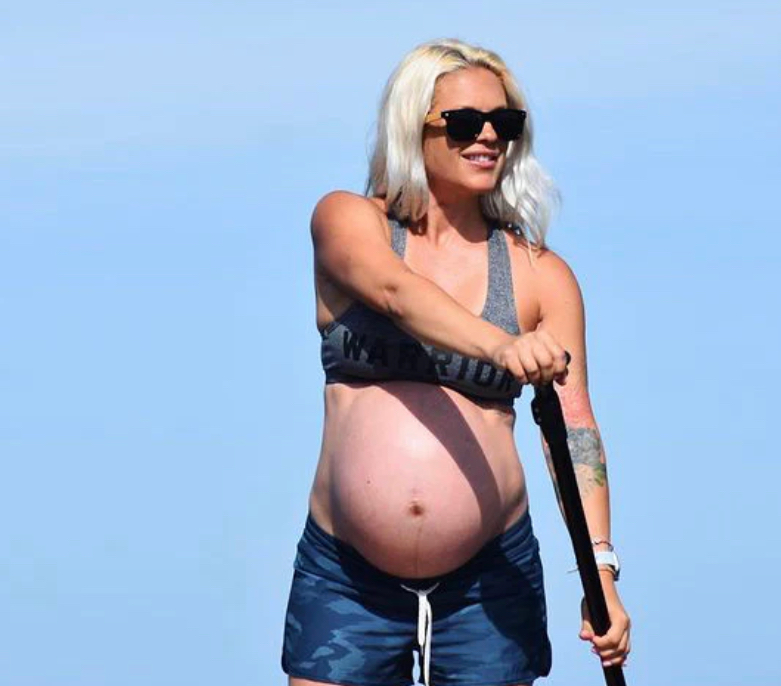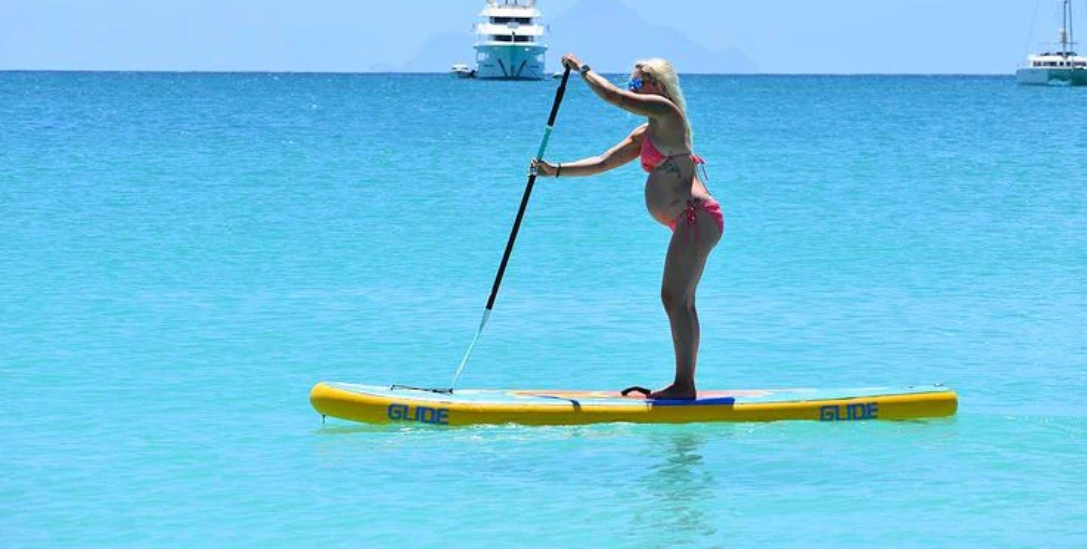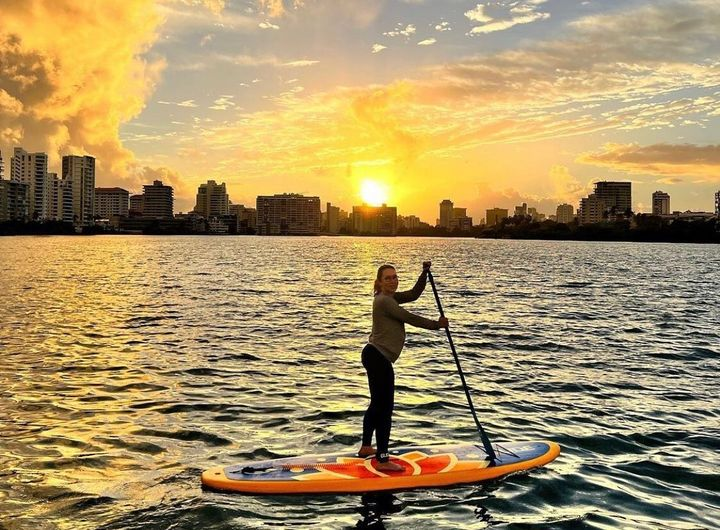
The Ultimate Guide to Paddle Boarding While Pregnant: Stay Fit and Safe
Paddle boarding while pregnant is safe and empowering. Learn how to stay active, comfortable, and confident on the water with tips for every trimester.
Paddle boarding while pregnant is a safe, low-impact way to stay active and centered — as long as you use the right gear, pick calm conditions, and listen to your body.
With an inflatable SUP, supportive PFD, and a mindful pace, you can keep moving, keep smiling, and enjoy the water safely through your pregnancy journey.
Table of contents
Paddle boarding is one of the most relaxing and low-impact workouts out there — combining balance, strength, and tranquility on the water. But what about expectant mothers? Can you paddle board while pregnant?
The answer is yes — with some thoughtful precautions. Paddle boarding while pregnant can be a wonderful way to stay fit, reduce stress, and connect with nature, as long as you listen to your body and follow safety guidelines. Here’s everything you need to know about enjoying SUP (stand up paddle boarding) during pregnancy safely and confidently.

1. Benefits of Paddle Boarding During Pregnancy
Paddle boarding offers more than just fun — it provides measurable physical and emotional benefits for expectant mothers.
Improves Balance and Core Stability
Pregnancy changes your center of gravity, and paddle boarding naturally strengthens your core, hips, and legs. These muscles help you stay steady, support your growing belly, and improve posture.
Enhances Cardiovascular Health
SUP provides gentle, steady cardio that boosts circulation, supports heart health, and builds endurance — all while avoiding high-impact strain.
Eases Back Pain and Builds Strength
Maintaining good posture while paddling strengthens your lower back and shoulders, reducing pregnancy-related tension and improving comfort.
Reduces Stress and Promotes Mindfulness
There’s something deeply calming about gliding across quiet water. The rhythmic motion of paddling can lower cortisol levels and help manage pregnancy stress.
2. Always Start With Medical Approval
Before stepping on a board, talk to your healthcare provider. Every pregnancy is different, and they can advise whether paddle boarding is suitable for your trimester and activity level.
Avoid paddling if you have a high-risk pregnancy, dizziness, or balance complications. Safety always comes first — no adventure is worth compromising your well-being.
3. Choosing the Right Paddle Board
Opt for an Inflatable SUP
Inflatable paddle boards are softer and more forgiving if you lose your balance. They’re also more stable due to their thickness and width — ideal for beginners and moms-to-be.
Look for Stability Over Speed
Choose a wide board (at least 33–34 inches) with a planing hull for maximum balance and comfort. Glide’s Lotus and Retro inflatable boards are both designed for excellent stability and ease of use.
Use a Comfortable Paddle
A lightweight adjustable paddle — ideally carbon fiber — will reduce arm fatigue and make your strokes smoother and easier.
4. Essential Gear for Safe Paddle Boarding While Pregnant
-
Personal Flotation Device (PFD): Always wear a properly fitted life jacket. Choose a vest-style PFD that allows easy movement around your belly.
-
Leash: Keeps your board attached to you if you fall.
-
Sun Protection: Use sunscreen (SPF 30+), polarized sunglasses, and a wide-brim hat.
-
Clothing: Lightweight, moisture-wicking layers work best. Rash guards, leggings, and neoprene booties add both comfort and coverage.
-
Hydration & Snacks: Keep water and snacks handy to maintain energy and prevent dehydration.
5. Technique Tips and Modifications
Start From a Kneeling Position
Begin paddling while kneeling to get a feel for balance. As confidence builds, rise to your feet one at a time, keeping knees slightly bent.
Widen Your Stance
As your pregnancy progresses, widen your stance on the board. This lowers your center of gravity and improves balance.
Keep a Relaxed Pace
Paddle at a comfortable, conversational pace. The goal isn’t distance — it’s staying active and enjoying the water safely.
Shorter Sessions
Limit sessions to 30–45 minutes depending on your energy level, and avoid paddling in windy or rough conditions.

6. Listen to Your Body
Your body knows best. If you feel light-headed, short of breath, overheated, or fatigued, it’s time to rest. Drink water frequently and take breaks between paddling intervals.
Pregnancy isn’t the time to push limits — it’s about maintaining movement and mindfulness, not performance.
7. Paddle With a Partner
Whenever possible, paddle with a friend or partner. They can assist if you need help or simply share the moment. Group paddling also adds a layer of safety, especially if conditions change unexpectedly.
8. Post-Paddle Recovery and Relaxation
After paddling, stretch gently — focusing on your lower back, hips, and shoulders. Prenatal yoga poses such as Cat-Cow, Child’s Pose, or Seated Side Stretch help ease tension and improve flexibility.
A short meditation or a few deep breaths by the water can also promote relaxation and reduce post-workout fatigue.
9. Ideal Conditions for Paddle Boarding While Pregnant
-
Calm, flat water (lakes, bays, or slow-moving rivers)
-
Light or no wind
-
Air temperature between 70–80°F (avoid extremes)
-
Easy shore access for launching and landing
Avoid high surf, strong currents, or cold water — these add unnecessary risk and strain.

Review
- Low-impact, safe movement: With doctor approval, calm-water paddling on a wide inflatable SUP lets you stay active without joint strain.
- Stability first: Wear a vest-style PFD, use a leash, widen your stance, and keep sessions short at a conversational pace.
- Listen to your body: Prioritize hydration, shade, and breaks; stop if you feel dizzy, overheated, or unusually fatigued.
FAQs About Paddle Boarding While Pregnant
Is it safe to paddle board in early pregnancy?
Yes, if your doctor approves and you feel comfortable. The first trimester is often fine for gentle paddling in calm waters.
What trimester is best for paddle boarding?
The second trimester tends to be ideal — energy levels are higher and balance is manageable.
Can I fall and hurt the baby?
It’s unlikely if you paddle cautiously on calm water. Use an inflatable board and avoid rough conditions to minimize risk.
Can I keep paddling after giving birth?
Yes! Many women return to paddle boarding postpartum once cleared by their healthcare provider. Start slow and focus on rebuilding core strength.
Do I need special gear for pregnancy?
Not necessarily, but comfort matters. Choose flexible clothing, a roomy PFD, and a lightweight paddle.





